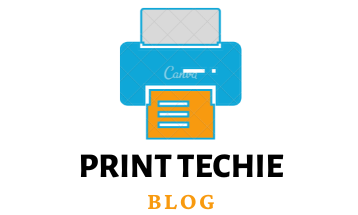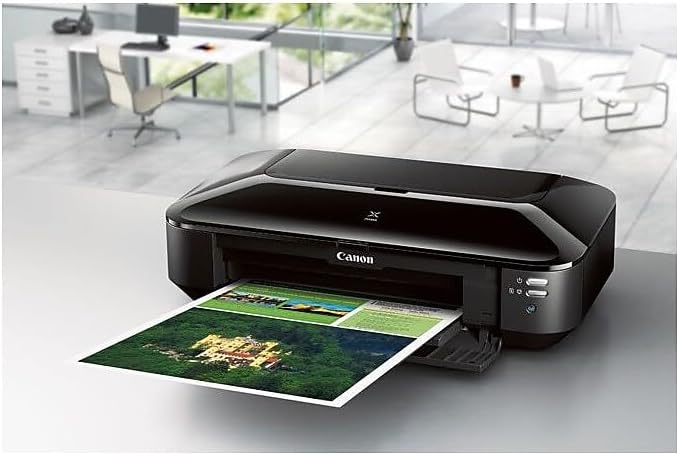Are you facing issues with your Canon printer? Resetting the device might be just the solution. With a simple reset of your Canon Pixma, problems, such as it not functioning optimally or non-responsiveness, can be remedied quickly. Reset Canon Pixma printer is an effortless procedure that enables it to restore its original settings and perform optimally. You have three reset options: soft, hard, or factory reset – each serving a unique purpose. Whether you’re dealing with small or bigger issues, restarting your printer can be the simplest solution. This article will walk you through resetting your Canon Pixma printer and discuss its importance.
Different methods to Reset Canon Pixma Printer:
Three options exist when resetting your Canon Pixma printer: soft reset, hard reset, and factory reset. Whichever route you choose will have the same outcome – a fully restored device. Each of these solutions has a special goal and must be utilized based on the situation you are dealing with.
Soft Reset Canon Pixma Printer:
The soft reset on your Canon Pixma printer is ideal for quickly and easily resolving minor issues such as slow printing speed or unresponsiveness. Unlike other more disruptive methods of resetting, this one ensures minimal inconvenience while still effectively restoring performance.
What is a Soft Reset?
A gentle reset is a simple way to rejuvenate your printer: switch it off and turn it back on. Doing so will clear the device’s memory and resolve minor issues you may be having. It’s an easy solution that can save time, energy, and money.
How to Perform a Soft Reset?
To perform a soft reset on your Canon Pixma printer, follow these steps:
- Press the power button to turn off the printer.
- Wait a few seconds, then press the power button again to turn the printer back on.
- Check if the problem has been resolved.
It is easy to troubleshoot minor issues with your Canon Pixma printer via a soft reset. Nonetheless, if the issue remains persistent or more severe than expected, you may need to take further steps, such as performing a hard reset or factory reset.
Hard Reset Canon Pixma Printer:
When a soft reset doesn’t do the trick, it’s time to take action with a hard reset for your Canon Pixma. This type of printer reset is more intense and should be used only when dealing with something major.
What is a Hard Reset?
If you’re experiencing difficulty with your Canon Pixma printer, a hard reset can help. A hard reset clears the device’s memory and helps solve problems like network settings, configuration issues, or software glitches.
How to Perform a Hard Reset:
To perform a hard reset on your Canon Pixma printer, follow these steps:
- Press the power button to turn off the printer.
- Disconnect all cables from the printer, including the power cable.
- Wait for a few seconds, and then reconnect the power cable.
- Press the power button to turn on the printer.
- Check if the problem has been resolved.
Factory Reset Canon Pixma Printer:
When all else fails, a factory reset of your Canon Pixma printer may be the solution. This is the most extreme measure and should only be used after performing both soft and hard resets that have proven ineffective in resolving an issue.
What is a Factory Reset?
Reset your Canon Pixma printer to its original state with a factory reset. This implies that all personalized configurations, settings, and software will be eradicated, with the printer reset to its original factory state.
How to Perform a Factory Reset:
To perform a factory reset on your Canon Pixma printer, follow these steps:
- Press the power button to turn off the printer.
- Disconnect all cables from the printer, including the power cable.
- Hold down the stop button while reconnecting the power cable.
- Release the stop button after five seconds.
- Check if the problem has been resolved.
A factory reset may be the solution. However, it’s important to remember that all of your custom settings and configurations will be deleted once a reset is performed – so make sure to create backups of any critical data before doing so.
Also Read: Why Is My Canon Printer Printing Blank Pages:
Common Reasons to Reset Canon Pixma Printer:
Reinstalling your Canon Pixma printer can be the remedy to troubleshoot various issues. In this section, let’s examine some of the most frequent reasons why you may need to reset your printer.
The printer not functioning properly:
If your Canon Pixma printer is not functioning optimally, a reset may be able to restore it. Performing a soft reset can frequently address common issues such as slow printing or unsatisfactory print quality.
Printer not responding:
If your Canon Pixma printer isn’t responding, you may be able to fix the issue by performing a soft reset. If this solution doesn’t work, though, don’t worry. A hard reset might do the trick instead.
Changes made to network settings:
If you recently tampered with your network settings, a reset is vital to ensure the printer is connected and working properly. A hard reset may be necessary to restore network settings, but a soft reset can usually suffice for other configurations.
Exhausting all other available troubleshooting options before attempting a reset is imperative. To ensure you take the proper steps toward fixing any malfunctioning features, familiarize yourself with the user manual or consult an expert at Canon support services.
Tips to Consider Before Reset Your Canon Pixma Printer:
Before resetting your Canon Pixma printer, it is essential to understand the critical steps that must be taken to obtain a successful result. Resetting can help resolve various technical issues and improve its overall performance. In this section, we’ll explore these considerations in detail so you can make an informed decision.
Ensure all cables are properly connected:
Ensure that all cords are fitted appropriately, including the power cable and any extra cables connected to the printer, such as a USB cord.
Check if the latest firmware is installed :
Before you reset your Canon Pixma printer, make sure to install the most up-to-date firmware. This can help reduce existing issues and ensure your device runs at its best capacity. Installing the latest firmware will pave the way for a smooth operation.
Save all important print jobs before resetting:
To ensure all your print jobs are saved, finish them before you restart your Canon Pixma printer. Before resetting the printer, save any pending print jobs in memory, as a reset will delete them all.
Also Read: Best Printer Under 150$ 2024:
FAQs:
What should I do if my Canon Pixma printer is not functioning properly?
If your Canon Pixma printer isn’t functioning optimally, try performing a soft reset before troubleshooting other solutions. This can address common issues such as slow printing or unsatisfactory print quality.
What should I consider before resetting my Canon Pixma printer?
Before resetting your Canon Pixma printer, ensure all cables are connected properly, the latest firmware is installed, and any important print jobs have been saved. Resetting should always be a last resort, and it’s important to remember that any custom settings or configurations will be deleted after the reset is performed. It is also important to ensure adequate backups of critical data before doing so.
Will resetting my Canon Pixma printer erase my print jobs?
Yes, resetting your Canon Pixma printer will erase any print jobs stored in memory. Make sure to save all important print jobs before resetting the printer. Additionally, any custom settings or configurations will be deleted after the reset.
Understanding different types of reset options on a Canon Pixma printer can be an easy and efficient way to solve any printing issue that may arise. With either a soft, hard, or factory reset option, you will have no trouble getting your printer back in working order quickly and accurately. Resetting is straightforward and effortless – so don’t miss out on this simple solution. Before you reset your printer, it is wise to ensure all cables are plugged in correctly, update the firmware and save any essential printing jobs. Taking these precautions will help ensure a successful reset.

